15 Things You Should Think Twice Before Plugging into a Power Strip (Guide)
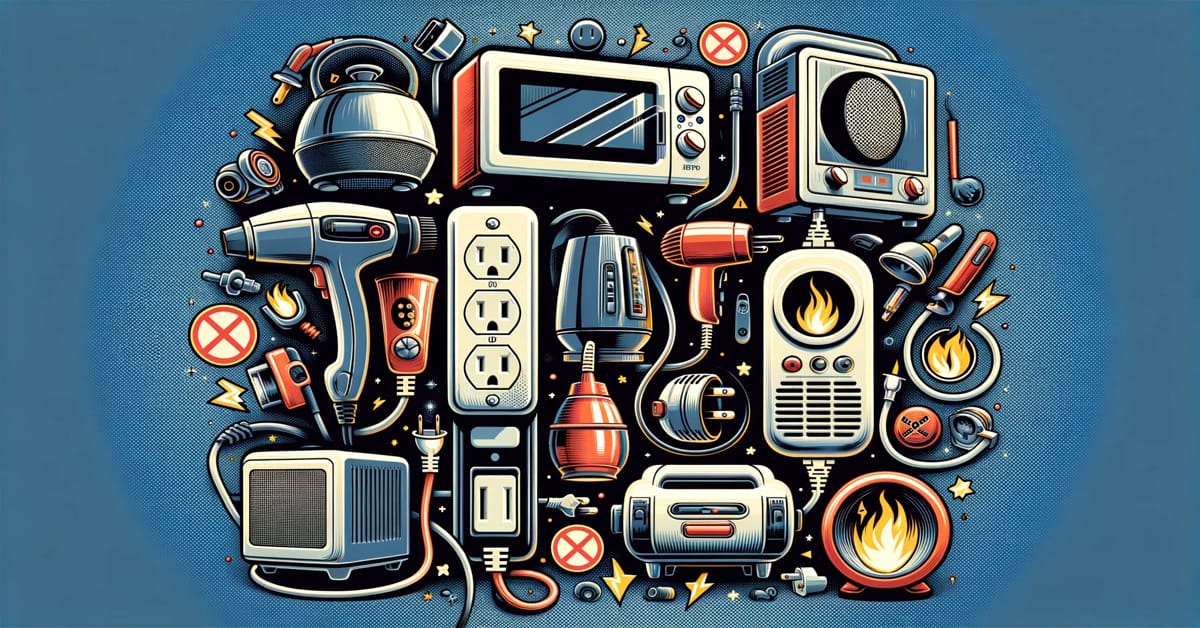
Ever been in that spot where you don’t have enough outlets? I know the feeling. It’s super tempting to grab a power strip and plug everything in.
But hold up, it’s super important to know what’s safe and what’s not regarding these handy helpers. So, let’s break it down, appliance style:
☕ Coffee Makers: These guys need a lot of juice. Best to plug them right into the wall.
💇♀️ Hairdressing Tools: We’re talking serious heat here. They need their own space, so plug them directly into an outlet for safety.
🔥 Space Heaters: Big energy eaters, these ones. Keep them off power strips to avoid overloading.
❄️ Portable A/Cs: They’re heavy on power use, like space heaters. Stick to a wall socket to keep things cool and safe.
🛠️ Air Compressors: They’re power-hungry, especially at start-up. A power strip just won’t cut it.
🔁 Any many more below…
From big kitchen appliances to multi-outlet converters, we’ll dive into the 15 things that should never be plugged into a power strip. Let’s make sure we’re using these devices safely and effectively.
1. Refrigerator/Freezer
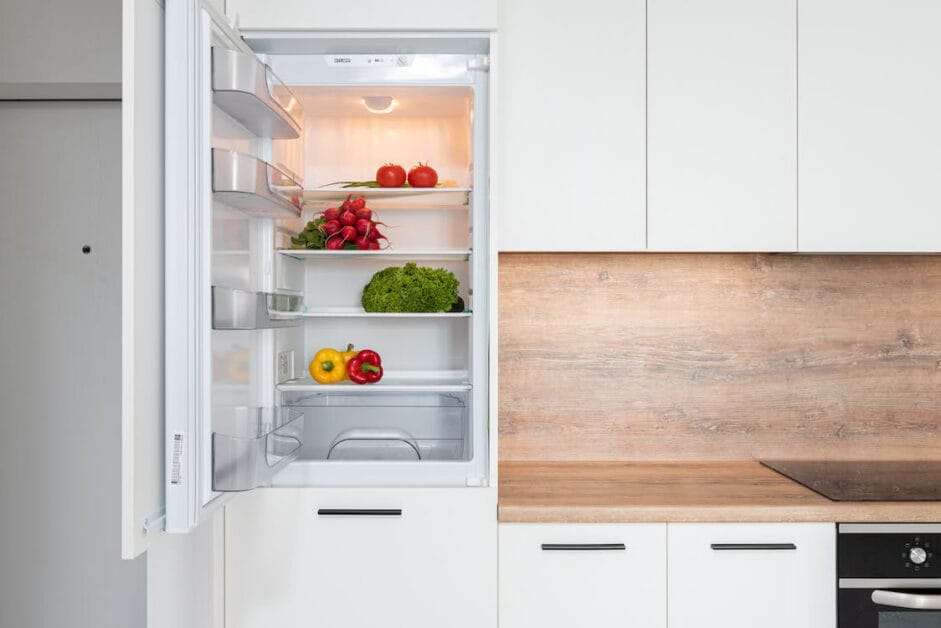
Your fridge and freezer, as awesome as they are at keeping your food cool, shouldn’t be plugged into a power strip. Why not, you might wonder?
It’s because these machines are like the energy-hungry beasts in your kitchen. They always cycle on and off, demanding more power than a power strip can supply.
They have plugged these appliances directly into dedicated wall outlets to prevent power strips from getting overloaded. Besides, it makes sense to let them keep their cool without interruptions.
Here’s a piece of advice for those with limited outlets in their kitchen – consider having an electrician install a few more. It’s for the safety of your appliances and, most importantly, for you.
2. Microwave Oven
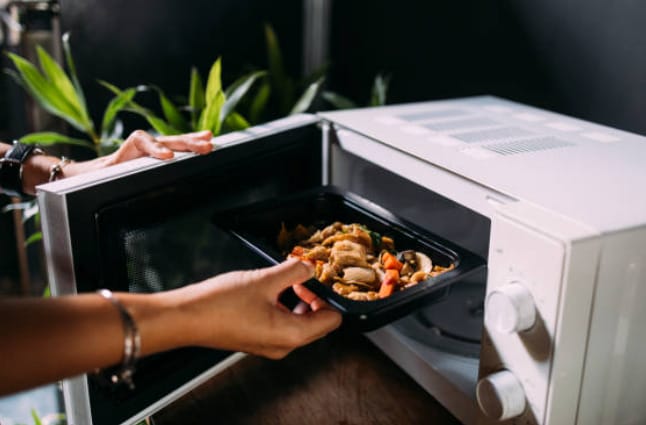
A microwave is a blessing for modern kitchens, transforming food handling. Its ability to thaw, cook, and reheat surpasses the conventional oven’s speed and efficiency. Still, it’s crucial to respect the high-energy demands of this miraculous appliance.
Microwaves, despite their size, consume a significant amount of energy. It’s not just about choosing a power supply appropriate for your device’s wattage; it’s about safety.
Power strips cannot handle the energy consumption of microwaves, and using one risks overheating and potential fire threats.
3. Slow Cooker
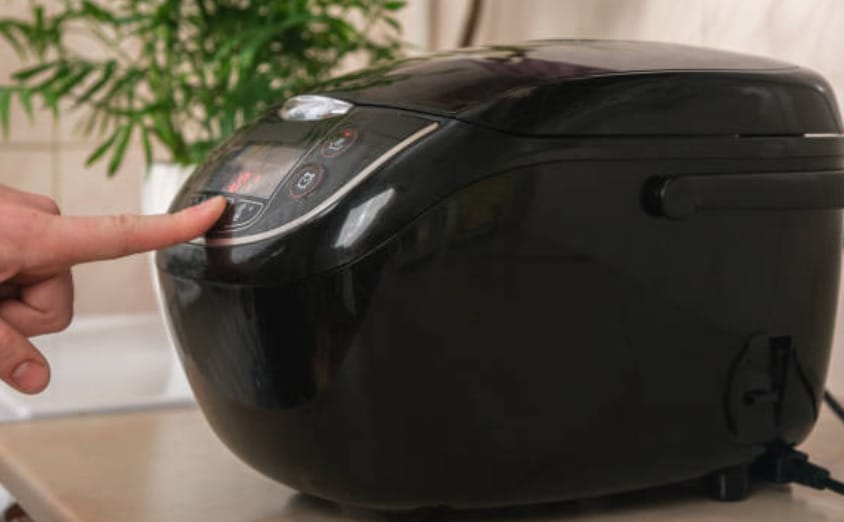
Contrary to popular belief, slow cookers are power-consumption marathon runners.
They’re in this for the long haul; slow cookers aren’t just zapping energy for a quick minute but maintaining their power draw for hours. While it may seem like slow cookers are energy sippers, they’re steadily drinking electricity for an extended stretch.
It’s counterintuitive, yes – you’d naturally think that slow cookers are low-amperage devices. However, it’s not just about power but also about the duration. A power strip cannot guarantee continuous energy over extended periods, which is a must for the safe operation of a slow cooker.
To ensure your home’s safety, we must not take shortcuts by plugging a slow cooker into a power strip to save outlet space. The power strip can’t handle the long-term power demands of slow cookers. So, it’s crucial to always plug your slow cooker directly into a wall outlet.
4. Toaster
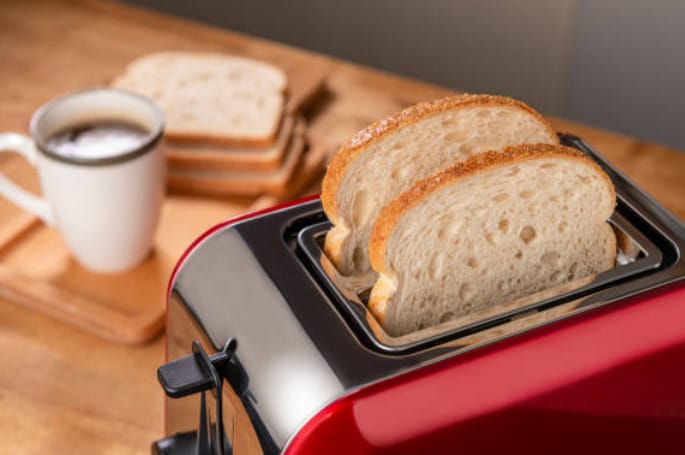
Did you know that your innocuous toaster is a power-guzzling monster? Unseen to the naked eye is a hotbed of thick exposed wires that heat up to blood-red to crisp up your bread.
This mean feat requires a surprising amount of electricity, making it too heavy for the less robust power strip to bear. Avoid the risk of overheating: plug your eager toaster directly into a wall outlet to keep the kitchen excitement only where it’s due.
Its compact size is misleading: a toaster can demand as much power as its larger appliance cousins.
5. Coffee Maker
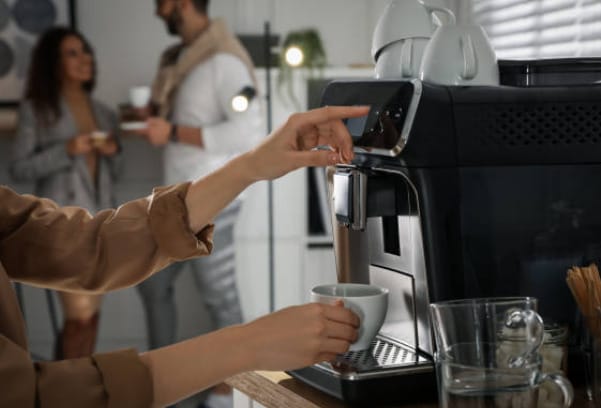
Let’s spill the beans on a common appliance potentially causing a ruckus with your power strip – the quintessential coffee maker. Making your morning cup of joe might seem a lighter affair, but sorry folks, it’s not!
Most coffee makers demand substantial amperage to turn those savory roasted beans into your hot beverage. It’s an energy load that your power strip may struggle to handle.
Plug your coffee maker into a power strip, and you could kick-start your day with a power-tripping experience – or worse, a half-brewed pot of coffee.
How about we make life simple and safe?
Always give your coffee maker a dedicated wall outlet. It will ensure no electrical overload risk and keep your daily coffee ritual smooth and uninterrupted.
Remember, the caffeine cravings of your coffee maker are met best when plugged directly into a wall outlet.
6. Hairdressing Appliances
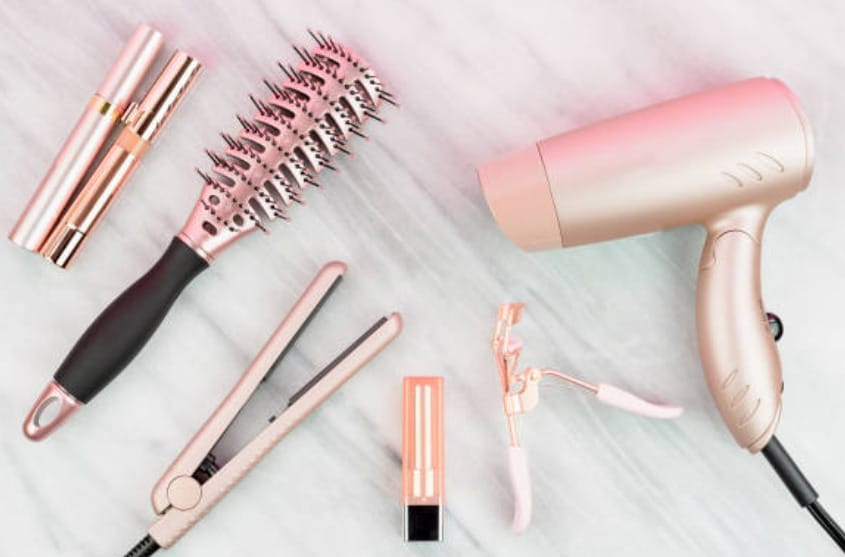
The convenience of having a power strip in the bathroom can be tempting when you’re short on outlets. But here’s something important to remember: heat-generating hair appliances like hairdryers, curling wands, and flat irons shouldn’t be plugged into a power strip.
These gadgets must produce heat, meaning they draw substantial amounts of amperage. Combine several of these into a power strip, and you’re looking for trouble.
To avoid the risk of tripping the breaker – or worse, causing a fire – these tools should be plugged directly into a wall socket. And bonus points for using an outlet with a ground-fault circuit interrupter to increase safety should they accidentally be exposed to water.
7. Space Heaters
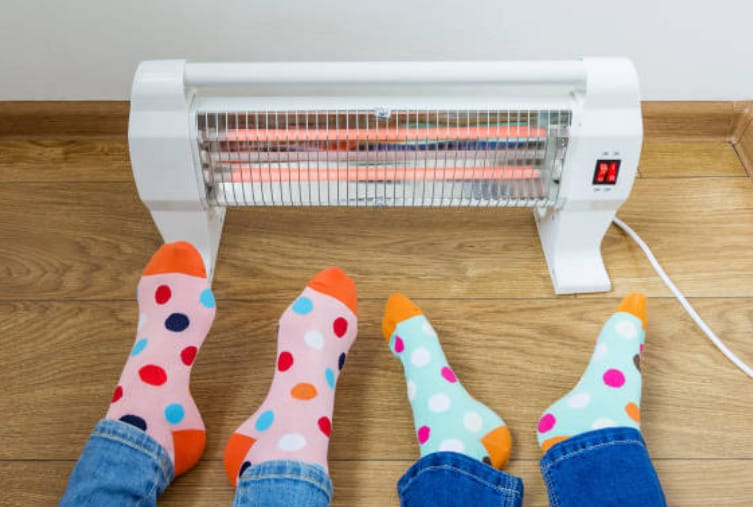
Ah, the space heater. It’s a cozy little device that can warm up a chilly room in a snap. But it’s a high-demand device, not just regarding warming our toes but also regarding the electricity it eats up.
Most portable heaters gulp down 1,500 watts of power on their high settings. That’s a lot of energy conforming to the might of a space heater!
Connect your space heater to a power strip, and you’re headed straight for trouble town. Irrespective of the safety features that are often built-in, they’re not fully foolproof.
They auto-blip off when overheating, but pushing your luck with the wrong power source, like a power strip, can be an unnecessary hazard.
Regular power strips and extension cords aren’t fit to handle the high electrical current drawn by a space heater. Considering the substantial current required to switch these babies on, it’s no wonder.
8. Portable A/C
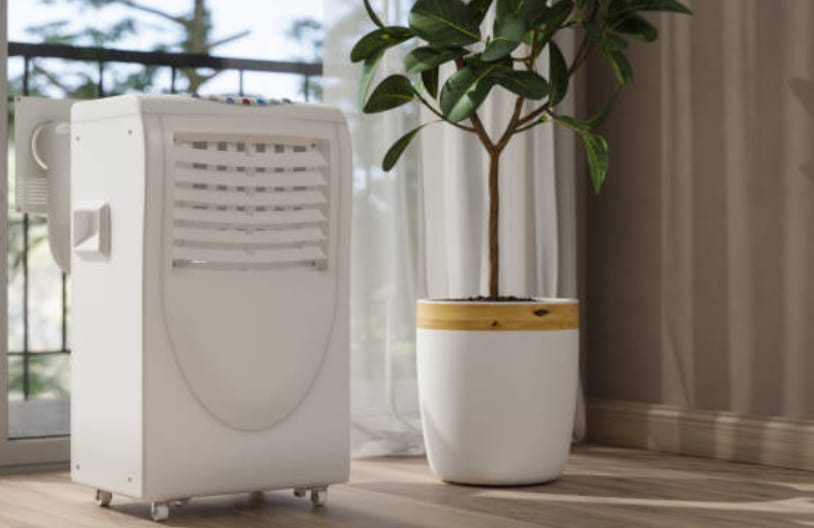
As with space heaters, portable air conditioners can pose a significant risk when plugged into power strips. Much like heaters, air conditioners are designed to cycle on and off and demand a large amount of current when they switch back on.
This fluctuation can harm a power strip, leading to overheating or a tripped circuit breaker. But wait, there’s more to it. When dealing with appliances with a high demand for current – specifically during their startup process – you’re essentially inviting trouble if using a power strip.
What’s more alarming is that this can lead to more severe consequences, such as house fires. The solution? It’s quite straightforward: plug portable air conditioners into a dedicated wall outlet. By doing this, you’re ensuring the safety of your home and avoiding any potential electrical hazards.
9. Air Compressors

Air compressors, though incredibly handy for ambitious DIYers, demand huge energy during start-up. Their high power needs make them ill-suited for plugging into power strips.
Overloading a power strip with a high-drain appliance like an air compressor can heighten the risk of a trip or fire hazard. Understand that power strips aren’t designed to bear this kind of load.
- Use a heavy-duty extension cord for your air compressor. This may be a better choice to ensure maximum efficiency and safety for your air tools.
- Avoid plugging air compressors into power strips altogether.
10. Sump Pump
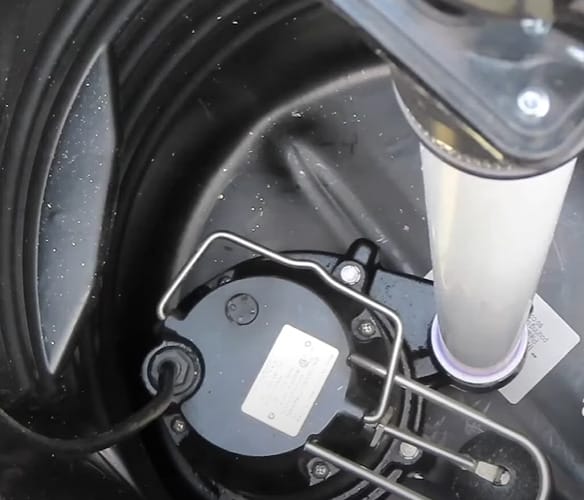
Sump pumps, trust me, are not power strip-friendly devices. Often, they serve as the sole barrier between a comfortably dry basement and a disastrously flooded one.
They demand more energy to function efficiently than your average power strip can manage. So, giving the strip a rain check isn’t just a good idea; it’s essential.
Another important thing to note is the environment in which these pumps work. They’re designed for wet, often damp spaces where power strips dare not tread.
Most power strips are made to steer clear of moisture, making them unsuitable for sump pumps. It’s not much of an electrical alignment between these two.
In the unfortunate flood event, your Sump pump’s duty starts. But imagine if your power strip fails during that critical moment. It’s a scary scene you wouldn’t want to imagine.
11. Second Power Strip
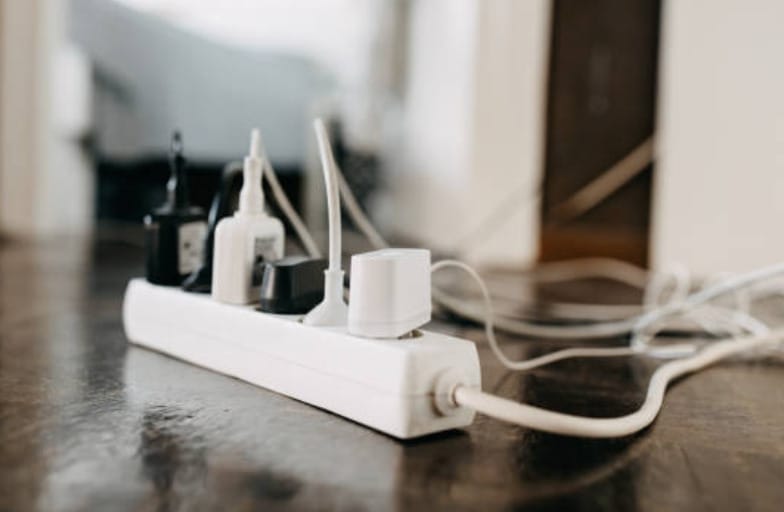
We are coming to our next big no-no – plugging a power strip into another one. That’s right, this one’s a biggie, folks! While it may seem clever at the moment, it’s a dangerous game you’re playing.
Not to mention, this reckless move goes against all fire safety codes. It’s not a surprise-fire kind of stuff you want in your space.
Let’s get to the specifics. These handy little gadgets power strips are a lifesaver for homes or offices lacking adequate electrical outlets.
Their efficiency lies in allowing users to connect multiple light-load electronics, be it a lamp, a portable device charger, or your TV, all to one source plugged into a single socket. Simple and effective!
12. Washing Machine
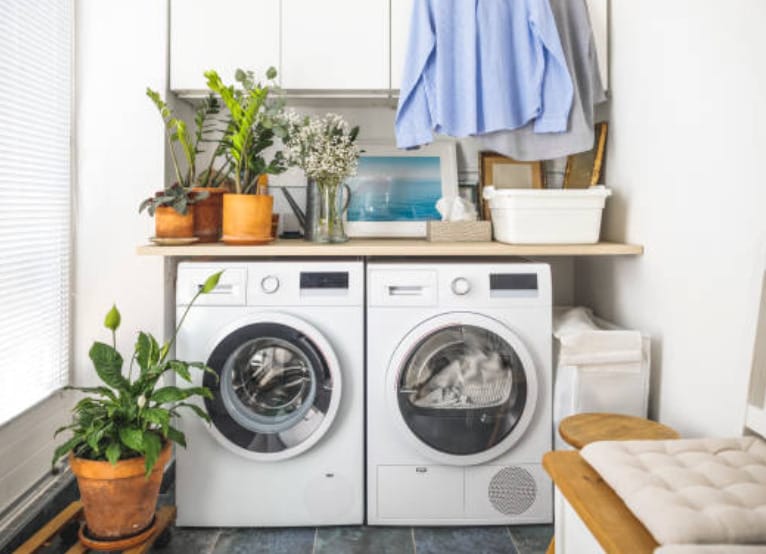
Here’s an image I can’t get from my mind: a washing machine humming away, cheekily plugged into a power strip. Trust me, it’s not a particularly safe sight. The average washing machine uses up to 1400 watts of power, pushing power strips to their absolute limits.
With prolonged usage cycles, washing machines have the uncanny ability to overheat power strips. Don’t forget that we typically leave washing machines unattended for extended periods. That’s an hour or so of potential danger posed by plugging your washing machine into a power strip.
Next time when laundry day comes around, resist the urge to plug that washing machine into a power strip. Show some love for the designated wall outlet meant for your washing machine.
13. Blenders

Watch out, all my smoothie lovers: blenders are not power strip friendly. That Magic Bullet may seem like a harmless kitchen tool, but it’s a wattage wizard.
Safety is paramount, so it’s important to always plug a blender directly into a kitchen GFCI outlet. This ensures your blender gets all the power it needs and keeps you from risking a potential short circuit.
Blenders deal with liquids – it’s their nature – and the last thing you want is to spill some smoothie on your power strip. Now that’s a real blender blunder!
Remember, just because an appliance is small doesn’t mean it’s power strip appropriate. The size of an appliance doesn’t determine if it’s safe to plug it into a power strip. It all boils down to the power an appliance demands, and blenders demand quite a lot with their mighty motors.
14. Power Tools
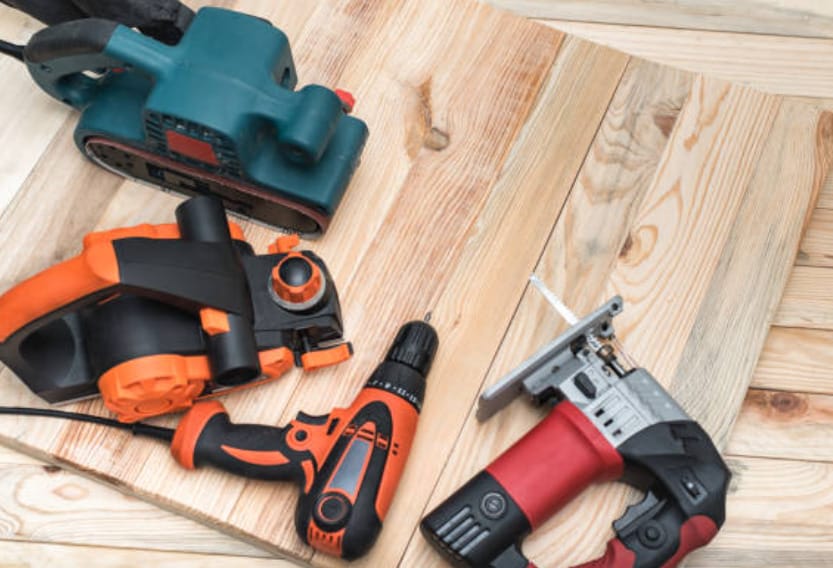
Safety should always take precedence when it comes to power tools in your workshop. Naturally, you’d think of using a power strip for power tools, but not just any power strip.
You must ensure you use a power strip equipped with grounded outlets and supports 220 volts. This type of power strip additionally uses a more substantial 14-gauge wire between the strip and the plug. It’s crucial because it can carry a higher load without heating up.
On the flip side, power strips are a practical solution for powering multiple electrical devices using a single electrical outlet. The strip is a block of electrical sockets attached to a flexible cable, commonly with a mains plug. It’s essentially your single-socket solution for powering multiple devices.
15. Gaming Equipment
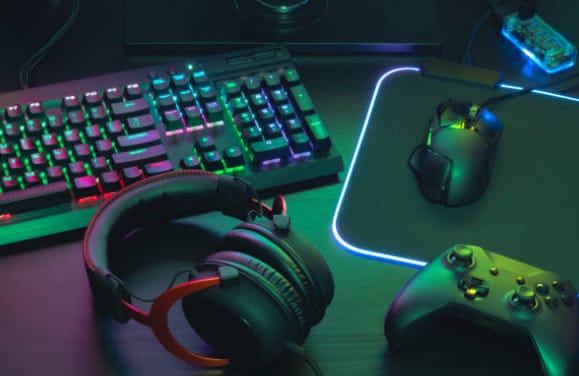
Despite the non-threatening look, gaming consoles and other gaming equipment are high-energy devices. Avid gamers may not realize it, but these gadgets use a voltage similar to your microwave or vacuum cleaner.
It’s common to see power strips supporting gaming setups. With your game console, monitor, router, speakers, and maybe even gaming chair, there’s a lot to power. But here’s an essential tip: avoid plugging your gaming console into a power strip.
Most people are not aware power strips are designed for low-power electronics. It is ideal for items like laptops, smartphones, or lamps. Feed it high-energy devices, and you’re setting up for potential dangers. And we’re not talking about dragons, aliens, or endgame villains; this is about real-world electricity issues.
When purchasing a power strip, make sure it’s one designated as a surge protector. This will help shield your gaming setup from harmful power surges, keeping your equipment and you safe. You’re going to invest in top-tier gaming equipment. Then, don’t short-change the method you supply power to them.
Power Strip Savvy: Navigating the Do’s and Don’ts
Let’s discuss something we all use but might not think too much about power strips. In our world, where gadgets and gizmos surround us, power strips are like unsung heroes, quietly making our tech-driven lives easier. But it’s crucial to use them smartly and safely.
Let’s dive in and learn how to make these handy devices our allies, not hazards, in our electronic lives.
| Power Strip Usage | Do’s | Don’ts |
|---|---|---|
| General Use | Use power strips wisely and within their limits. Consider unplugging a device before adding a new one to the strip. | Avoid plugging one power strip into another, also known as daisy-chaining. Do not use extension cords with power strips. |
| Safety | Be mindful of the devices connected to a power strip. Some items should not be connected for safety reasons. | Ignoring safety guidelines can lead to electrical fires. Avoid overloading power strips with too many devices. |
| Practicality | Balance convenience with safety. Know when and how to use a power strip properly. | Avoid using power strips to solve a shortage of outlets for numerous gadgets. Consider power-free alternatives. |
Keeping Power Strips in Top Shape: Essential Maintenance Tips
Maintaining your power strips isn’t just about keeping them clean; it’s about ensuring they’re safe and functioning correctly. Like any tool in your home, they need a bit of TLC to perform their best.
Let’s walk through some straightforward tips to keep your power strips in great shape and your home safe.
- Regular Inspection: Make it a habit to check your power strips periodically. Look for any signs of damage like frayed wires, cracks, or burn marks. If you spot any red flags, it’s time to replace the strip. Remember, a damaged power strip is more than just an inconvenience; it’s a safety hazard.
- Keep Them Clean: Dust and debris can accumulate on your power strips, which isn’t just unsightly; it can be dangerous. Gently wipe down your power strips with a dry cloth to keep them dust-free. Avoid using liquids or sprays, as moisture can harm the electrical components.
- Proper Placement: Position your power strips where they have good air circulation. Overheating is common, so avoid tucking them under rugs or furniture. Not only does this help with cooling, but it also reduces the risk of fire.
- Avoid Overloading: It’s tempting to plug in as many devices as possible, but overloading a power strip is a major no-no. Stick to the recommended load (usually indicated in the manual or on the strip itself) to prevent overheating and potential electrical fires.
- Unplug When Not in Use: If you’re going away or not using the power strip for an extended period, unplug it. This reduces the risk of electrical issues and saves energy.
- Know When to Replace: Power strips don’t last forever. Even if there’s no visible damage, it’s wise to replace them every few years, depending on their usage. Frequent surges can degrade the internal components over time, reducing their effectiveness.
- Surge Protector Check: If your power strip is also a surge protector, check its indicator light (if it has one). A dim or non-functioning light can signal that the surge protection is no longer active and it’s time for a replacement.
References
Organizations:
- Electrical Safety Foundation International (ESFI). https://www.esfi.org/
- Underwriters Laboratories (UL). https://www.ul.com/
Books:
- “Electrical Safety Handbook” by John Cadick, Mary Capelli-Schellpfeffer, Dennis K. Neitzel, and Al Winfield. https://www.barnesandnoble.com/w/electrical-safety-handbook-4th-edition-mary-capelli-schellpfeffer/1127944053
- “Black & Decker The Complete Guide to Wiring, Updated 7th Edition: Current with 2017-2020 Electrical Codes” by Editors of Cool Springs Press. https://www.barnesandnoble.com/w/black-decker-the-complete-guide-to-wiring-updated-7th-edition-cool-springs-press/1133275098
Website Resources:
- Consumer Reports. http://consumerreports.org/
- Government Consumer Safety. http://cpsc.gov/
Video References:
The Home Depot
The Den of Tools
